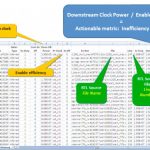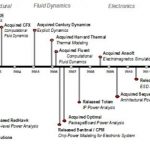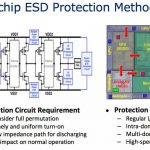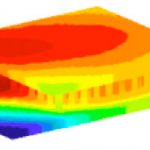When you think Apache Design you probably think Low Power Design and what stuffed animal will they give away at DAC. The other thing you should think about is how the top semiconductor companies around the world use Apache products for leading edge semiconductor design. Demos are fine, but there is nothing like talking directly … Read More
Best Practice for RTL Power Design for Mobile
Mobile devices are taking over the world. If you want lots of graphs and data then look at Mary Meeker’s presentation that I blogged about earlier this week. The graph on the right is just one datapoint, showing that mobile access to the internet is probably up to about 15% now from a standing start 5 years ago.
Of course, one obvious… Read More
SoC Power Integrity Challenges
At DAC in 2012 I visited a few dozen EDA companies and blogged 32 articles, however I didn’t get to see what Apache Design (now a subsidiary of ANSYS) had to say. I did have 20 minutes today to watch their latest video on SoC Power Integrity Challenges and decided to share what I learned. If you want to watch the video at Tech Online,… Read More
Watch the Clock
Clock gating is one of the most basic weapons in the armoury for reducing dynamic power on a design. All modern synthesis tools can insert clock gating cells to shut down clocking to registers when the contents of the register are not changing. The archetypal case is a register which sometimes loads a new value (when an enable signal… Read More
Another Winner at DesignCon
After a show like DesignConwraps up we get a chance to ask ourself what it all meant, and how was this year different than last year. Reading through many posts about DesignCon I came to discover that the Awards at DesignCon are less contentious than at CES, and also that ANSYSreceived a DesignVision awardfor the 2nd year running. … Read More
Power, Signal and Thermal Updates from ANSYS at DesignCon
DesignConis next week in Santa Clara, so today I spoke with Mark Ravenstahlfrom ANSYS to get an idea of what to expect at the conference and trade show.
A Brief History of Apache Design
Apache Design Solutions was founded in 2001 by Andrew Yang and three researchers from HP Labs (Norman Chang, Shen Lin, Weize Xie). They realized that engineers striving to meet the goal of increased device miniaturization, as defined by Moore’s Law, would eventually hit stumbling blocks in their progress. The founding team believed… Read More
ESD Check Methodology
In Pune at the start of the month, Norman Chang, Ting-Sheng Ku, Jai Pollayil of Apache/Ansys and NVIDIA presented and ESD check methodologywith Fast Full-chip Static and Macro-level Dynamic Solutions . ESD stands for Elecro-Static Discharge and is basically injecting very high static voltages (think how your hand gets charged… Read More
Apache/Ansys presents: 3DIC thermal, transmission lines, low frequency analysis
Late in January it is DesignCon at the Santa Clara convention center from January 28th-31st. Details are here.
On Tuesday from 11.05 to 11.45 Apache and Ansys will be presenting on Thermal Co-analysis of 3D IC/packages/system. This is being presented by a whole team of people: Stephen Pan, senior product specialist at ANSYS; Norman… Read More
Apache Presents: ESD analysis
The 26th Conference on VLSI Design will be in Pune, India from January 5th to 10th at the Hyatt Regency. Details on the conference here. Registration here. I happened to be involved in the first of these conferences, which was held in Edinburgh where I was wrapping up my PhD. It was in the considerably less palatial surroundings of … Read More











